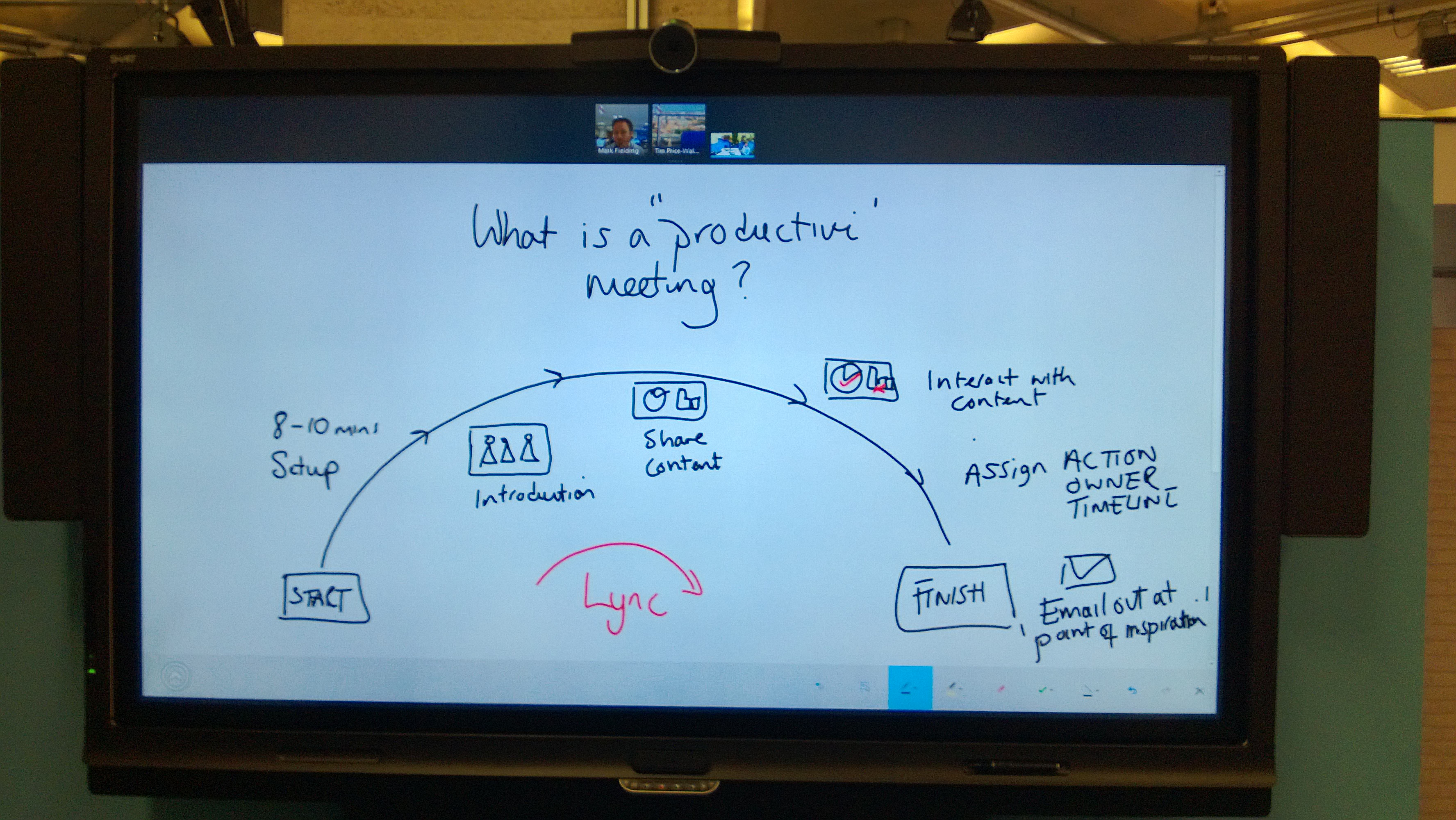Why your meetings are broken – and what you can do to fix them
Meetings can be the best part of your day -- or the absolute worst. They can be great tools for sharing information, sparking innovation and assigning tasks. Or they can be a complete waste of time. Whether good or bad, meetings can have profound effects on an organisation. So what separates the positive from the negative? It all comes down to one simple question: Are you using the time to talk about work or are you using the time to do work?
According to Tim Price-Walker, Enterprise Business Consultant for Steljes, most meetings follow a standard arc:
- Step 1: Getting things to work. The first few minutes are wasted while the facilitator fumbles with unfamiliar technology, whether you are holding an internal meeting or managing remote attendees. Often you book rooms weeks in advance and are faced with the pressure of setting up flip charts, white boards, video equipment and other supporting technologies at the last minute.
- Step 2: Making introductions. Next, you get bogged down in introductions and this is where things get tricky especially involving remote attendees – figuring out who has dialled into the conference line for the meeting, welcoming newcomers, recapping the last meeting, etc. Who has joined? Are you sure? How do you know?
- Step 3: Sharing the content. For most meetings, the ‘real guts’ of the session involves the use and focus on content, such as a PowerPoint slide deck, CAD design or an Excel spreadsheet. You’ll need to find a way to share content with everyone in the meeting --whether they’re in the room or not -- to allow them to actively contribute and be engaged. Sharing the content with remote attendees is often tricky. Who has the content? Can everybody see it? How do you make changes and amends?
- Step 4: Working with the content. In theory, you’re supposed to spend this time asking questions, debating ideas and assigning next actions. In reality, you’ll spend most of it checking your e-mail while someone reads their report out loud to the group. Then you’ll cram all of the actual work into the last two minutes before scrambling off to your next high-powered meeting. Isn’t work fulfilling? How many meeting end without clear ‘next actions’ or the assignment of an owner, actions and timeline?
- Step 5: Note for next time. About four hours later, you’ll get an e-mail with someone’s vague recollection of the meeting notes and actions items -- if you are lucky. Are things missing? Are the next actions not clear? Ah well, let’s book another meeting to cement the outcomes of the last meeting.
Notice a pattern there? You spend most of the time waiting around or having multiple meetings because the first one was inefficiently run. You were only engaged for a short period at the very end – the part where all the work gets done in a terrific hurry. The rest of it was a waste of your time, so you just tuned out and checked your e-mail instead. And no one could really blame you. The hang ups are often about the technology and we spend more time worrying about ‘how we run’ our meeting than about what the outcome should be.
A good meeting needs one crucial change, says Price-Walker. A good meeting strips away everything that distracts participants from questioning, collaborating and delegating tasks. Here are three of his tips for putting your meeting’s focus back where it belongs: On the work.
- Streamline your setup. When long setup times keep a meeting from starting promptly, it allows participants to disengage and saps the energy from the room. Setup delays usually come from using multiple systems that are unreliable or needlessly complex –conference dial in numbers, cumbersome e-mail file sharing to name a few. A quality unified communications platform strips away the complexity by offering voice, video, instant message, presentation and file-sharing tools all at once. Remember that meetings can dynamically change between these different mediums and knowledge workers need to be empowered.
- Create a natural visual focal point. One way to keep everyone from fiddling with their various devices is by shifting the focus of the room. Instead of asking everyone to follow along with a slide deck on their laptops, try using a large wall-mounted SMART Lync Room System from Steljes. When your meeting is visually engaging, it’s easier to convey complex ideas, whilst still holding the room’s full attention.
- Take notes as you go and share instantaneously. The more interactive your meeting is, the better your meeting is. With a SMART Room System for Lync from Steljes, you can annotate on top of your presentation or choose an electronic whiteboard to scribe assailant points. That way it’s easy to collect questions, new ideas and action items as they come up. And when the meeting is over, you can save all your notes and e-mail the document to the team right away – no more waiting hours for someone to type up their notes after the meeting.
Now that you understand why some meetings fall apart, it’s much easier to get back on track. By creating an environment free of distractions and delays, you can host meetings that really let your team focus on the work.
If you would like to learn more, you can reach out to Tim Price-Walker directly and visit the Microsoft Lync page to get more insights into running better meetings.
